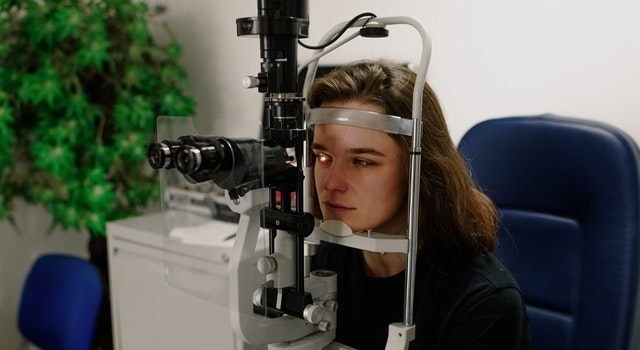
When it comes to eye care, many people think that a vision screening is enough to ensure their eyes are healthy. However, there’s a significant difference between a quick vision check and a comprehensive eye exam.
At Eyewear Gallery, we believe in the importance of detailed and personalized eye care, which can only be provided through comprehensive eye exams.
Here’s how these two types of exams differ and why a comprehensive exam is essential for maintaining healthy vision.
What Is a Vision Screening?
A vision screening is a short test that’s often conducted in schools, at the DMV, or as part of a routine health check. Its purpose is to measure how clearly you can see and whether you might need corrective lenses. Here’s what’s typically included in a vision screening:
- Visual Acuity Test: This involves reading letters on a Snellen eye chart (the familiar chart with letters of different sizes) to assess how well you can see at various distances.
- Basic Refractive Error Check: If you have trouble seeing clearly, the test will indicate whether you have a refractive error, such as nearsightedness or farsightedness. In this case, you’ll be referred for further testing to determine your prescription.
While vision screenings are helpful for identifying basic vision problems, they do not assess the overall health of your eyes or detect serious eye conditions that could lead to vision loss if left untreated.
What Is a Comprehensive Eye Exam?
A comprehensive eye exam is an in-depth assessment of your overall eye health, performed by an optometrist or ophthalmologist. Unlike a basic vision test, it thoroughly examines both your vision and the health of your eyes. Comprehensive exams help detect early signs of eye conditions and ensure your vision remains sharp and healthy.
During your visit to Eyewear Gallery, you can expect several important steps:
1. Medical and Vision History Review
Your optometrist will begin by discussing your health background, including any medications you take and family history of eye conditions. This step helps identify potential risks for issues like glaucoma, cataracts, or diabetic retinopathy.
2. Vision Tests and Refraction Assessment
You’ll undergo a series of tests to evaluate how clearly you can see, both up close and at a distance. Your optometrist will also perform a refraction test to determine if you need corrective lenses and what prescription will work best for you.
3. Eye Movement and Focusing Tests
The way your eyes move and focus on objects is crucial for daily tasks. Your optometrist will check how well your eyes work together to ensure there are no coordination issues that could cause discomfort, like headaches or blurry vision.
4. Intraocular Pressure Measurement
Using a technique called tonometry, the pressure inside your eyes is measured. This is a critical step in detecting glaucoma, a condition that can develop without symptoms but may lead to vision loss.
5. Retinal Examination
With the help of pupil-dilating drops, your optometrist will get a clear view of the inner structures of your eye, including the retina, optic nerve, and blood vessels. This helps identify early signs of serious eye conditions like macular degeneration, diabetic retinopathy, and retinal detachment.
6. Visual Field and Peripheral Vision Check
Your peripheral vision will also be tested to detect blind spots or abnormalities, which could indicate issues such as glaucoma or other neurological concerns.
7. Front-of-Eye Examination
A special tool, the slit lamp, is used to closely inspect the front of your eyes, including the cornea, lens, and iris, to catch problems such as dry eye, cataracts, or other surface abnormalities.
How a Comprehensive Eye Exam Differs from a Vision Screening
- A vision screening only tests how well you can see, while a comprehensive eye exam evaluates your eye health in detail, assessing both vision and overall eye health.
- Comprehensive eye exams can detect conditions like glaucoma, cataracts, and macular degeneration early, allowing for timely treatment.
- Based on the results of your comprehensive exam, your optometrist can recommend personalized treatments, such as vision correction, treatment for eye conditions, or lifestyle changes to protect your vision.
- Comprehensive eye exams can reveal signs of systemic conditions such as diabetes, high blood pressure, or high cholesterol, providing early detection that can benefit your overall health.
Why Comprehensive Eye Exams Are Important
While vision screenings are helpful for spotting basic issues, they are not enough to ensure the long-term health of your eyes.
Comprehensive eye exams provide a thorough evaluation of your eye health, allowing for the early detection and treatment of potential problems. Regular exams are crucial for protecting your vision and preventing serious conditions from developing unnoticed.
Request an Appointment at Eyewear Gallery
At Eyewear Gallery, we provide thorough, personalized eye care for all our patients. If you’ve only had a vision screening, it’s time to take the next step and protect your eye health with a comprehensive exam. Request an appointment with us today and ensure that your eyes are healthy and your vision is clear.


